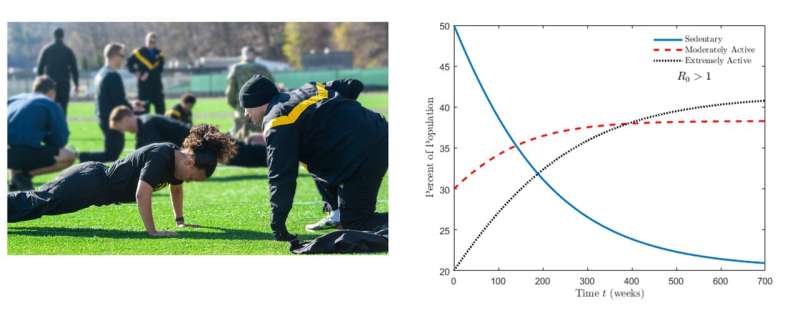
A newly developed mathematical model incorporates the influence of social interactions on community exercise trends, suggesting that interacting with moderately active people could influence sedentary people to become more active. Ensela Mema of Kean University in Union, New Jersey, and colleagues present these findings in the open-access journal PLOS ONE on October 19, 2022.
In 2018, the U.S. Department of Health and Human Services published evidence-based guidelines outlining recommended types and amounts of physical activity to promote health benefits for different populations of Americans. However, national population-level trends suggest that there has been little improvement in meeting these recommendations.
To help address this issue, Mema and colleagues drew on previous research showing that social interactions with peers can play a key role in boosting physical activity within a community. In line with that knowledge, they developed a mathematical model that simulates how social interactions can affect a population’s exercise trends over time. The model incorporates data from the U.S. Military Academy.
The model simulations showed that, in the absence of social interactions, populations experienced a long-term decrease in physically active individuals, and sedentary behavior began to dominate. However, when the simulations included social interactions between sedentary and moderately active people, sedentary populations became more physically active in the long term. Still, in simulations where moderately active people became more sedentary over time, overall physical activity trends plummeted.
While these simulations were not validated with real-world data, the researchers say they provide new insights that could inform public health efforts to boost community physical activity levels. The researchers outline a number of recommendations for such efforts, such as social activities designed to boost interactions between sedentary and moderately active people.
These simulations could also inform efforts to maintain physical fitness in the U.S. military, the researchers note. However, they say, more research will be needed to better understand the balance between encouraging exercise among sedentary people while retaining activity levels in moderately active people.
Source: Read Full Article




